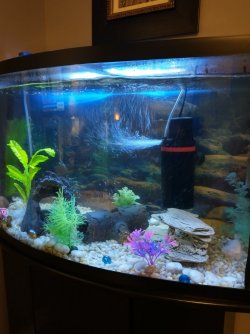The nitrite level is at the highest 5.0ppm on the API chart.@Dawnn
Are posting this on another site using the use name Fishstickss"
If so, I told you there what I will tell you here. If you can afford to spend a bit of money I could help you. By that I mean spending $12.97 on Amazon with free delivery. This is to buy a bottle of actual live tank bacteria. Not only am I pretty experienced in cycling, iI also keep clowns. Here is my 150 gal. clown tank. You cannot see all 11 of them in the pic, sorry.
View attachment 310276
@Byron
When this was posted elsewhere it indicated that both ammonia and nitrite were an issue. Here is the post from the other site:
This is 100% a cycling issue. And it illustrates why the fewer water changes one can possible do during a fishless or even a fish-in cycle are the best way to go, Of course this does not mean if the situation calls for a water change that oneshould not do it.
Nitrite needs no water change in a fishless cyle until the test kit read ov 16 ppm on an API type test kit as this will stall a cycle. Ammonia levels over about 6.4 ppm will stall a fishless cycle as well. So only when those numbers are hit should one do a mid-cycle water change for a fishless cycle.
Fish in are a different matter. When it comes to ammonia, over the short term, the absolute Total Ammonia (NH3 +NH4) number is not as important as knowing how much of that total is in the toxic NH3 form (ammonia) v.s the much less toxic NH4 form (ammonium). What this means is that one tank with 2 ppm of total ammonia can be safe for a bit while in another tank .5 ppm can be harmful.
Yes, I posted on another site about the ammonia because that was the problem then, and for a long time. When i ask for that advice I had just began using Prime. I measured the levels after that post and the ammonia was gone but the nitrites went high. My log in would not work on that site again to get back and give up update, so here it is


